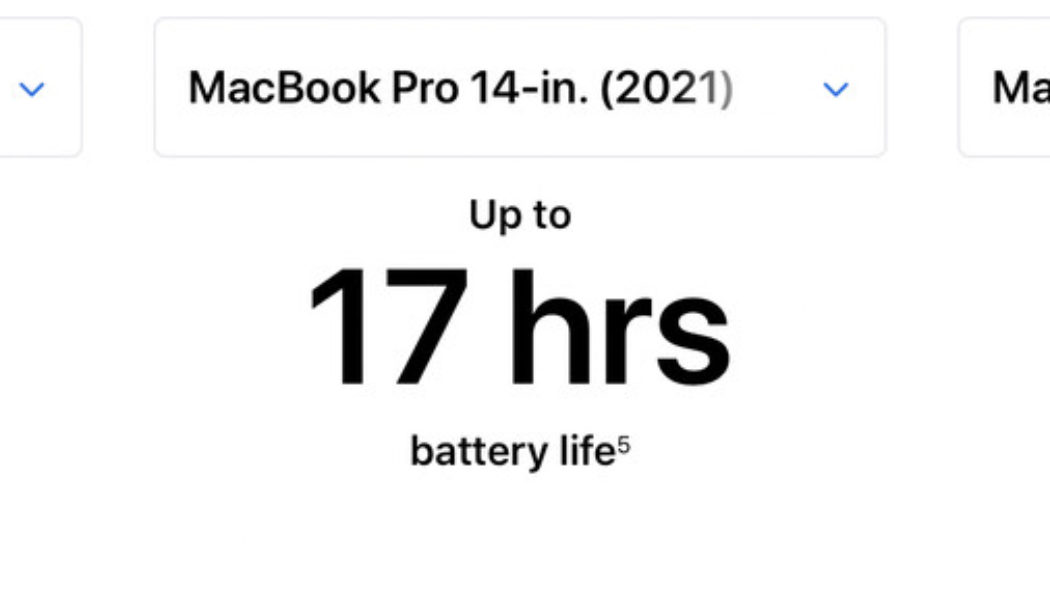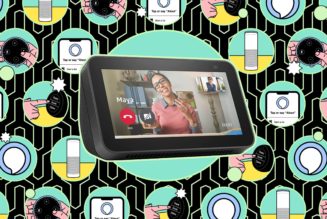Apple’s new MacBook Pros are here, and they may actually live up to the “Pro” moniker. But there’s one big question that comes with the new sizes and processors: how’s the battery life? To hear Apple tell it, it’s going to be great — the company even said onstage that the 16-inch had the best battery life ever, besting last year’s M1 Macs (which it also boasted would have the longest-lived batteries). But the metric Apple used to back up that claim is a bit suspect, and its other numbers tell a very different story.
In its keynote and press release, Apple says the 14-inch MacBook Pro will provide 17 hours of video playback and estimates that the 16-inch model can last for an unprecedented-for-Macs 21 hours. But using video playback as a measure of battery life is really only useful if you’re trying to sell a particular narrative — not if you just want to let people know how long their laptops will actually last. For one, Apple says these figures are derived from watching a movie using the Apple TV app. That’s not generally what people use their laptops for unless they’re marathoning the Lord of the Rings extended cuts. Plus, modern CPUs have so much silicon dedicated to video playback that it’s almost become effortless for them. It’s a battery flex, not a battery test.
That point is backed up by the fact that Apple’s more realistic wireless web test tells a very different story. Apple says the test involves browsing 25 popular websites using Wi-Fi, with screen brightness set to “8 clicks from bottom.” Under these conditions, the 16-inch MacBook Pro fails to beat even the M1 MacBook Air — it only gets 14 hours of life compared to the Air’s 15 hours. Apple’s estimate for the new 14-inch is 11 hours, the same as the 2020 Intel MacBook Air. Even this unflattering test (for the new MacBooks, not the old ones) has limitations: last we heard, Apple runs it using its own Safari browser instead of the more popular (and, according to macOS’s Activity Monitor, more energy-hungry) Chrome. Plus, some websites will drain your battery much faster than others.
In terms of hard numbers, the 14-inch MacBook Pro has a 70 watt-hour battery, and the 16-inch takes it all the way up to the FAA limit of 100Wh (the 13-inch M1 MacBook Pro has a 58.2 Wh battery, for comparison). Again, though, these metrics only tell us so much. The 16-inch Intel-based MacBook also had a 100Wh battery, and it only provided around eight hours of usage, despite Apple’s quoted 11-hour battery life. Plus, Apple is quoting three hours less battery life for the 14-inch than the 13-inch, despite the new laptop having a bigger battery. Yes, that number’s not based on a great metric, but that’s also not necessarily a good sign.
:no_upscale()/cdn.vox-cdn.com/uploads/chorus_asset/file/22937340/Screen_Shot_2021_10_18_at_4.33.22_PM.png)
Apple pulled this same trick last year, but it almost didn’t matter — the ARM processors lasted so much longer than Intel’s that we were willing to let it slide that the MacBook Air probably wouldn’t actually reach Apple’s estimated 18 hours of battery life. This year, Apple is setting even higher expectations for battery life, even though the new laptops are supposed to be significantly more powerful. It just seems unrealistic.
The MacBook Pro 14- and 16-inch have to feed more power-hungry (in relative terms, at least) performance cores, and they have fewer efficient cores to make use of when you’re doing light work like checking email or browsing a website or two. The standard M1 has four performance and four efficiency cores, where the M1 Pro and Max only have two efficiency cores, having traded in the rest for more performance ones: the cut-down eight-core M1 Pro that comes with the base 14-inch laptop has six performance cores, while the 10-core full M1 Pro and M1 Max have eight performance cores. They also have more powerful GPUs — the old M1 has 7 or 8 GPU cores; the new versions are rocking 14 to 32.
On top of that, the 14- and 16-inch laptops have what Apple calls an “advanced thermal architecture,” which includes an extra fan. Will that make a big impact? Will Apple be able to beat the original M1’s extra efficiency cores using sheer battery size? We simply won’t know until we can test these laptops in the real world — stay tuned for that in our upcoming reviews.
Great battery life has been the biggest story of Apple’s M1 laptops up until this point, with many people describing the Air and 13-inch MacBook Pro’s battery life as “all day.” It’s understandable why Apple would want to keep riding that goodwill and say that it’s done that again — and while it may have, the company hasn’t proven it yet, not with what it’s presented. So, if you want to be sure you’re getting the MacBook with the best battery life, you may want to hold off for a bit on pre-ordering the new ones — at least for a bit.









